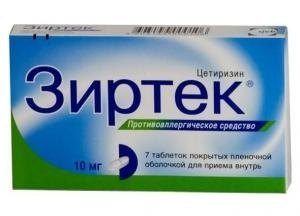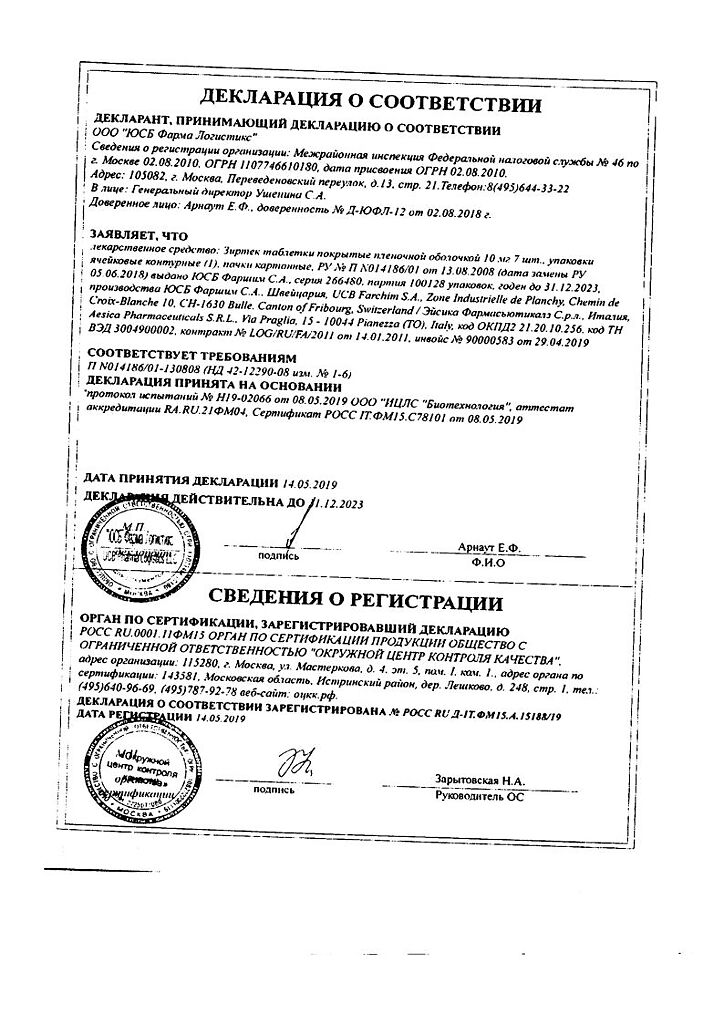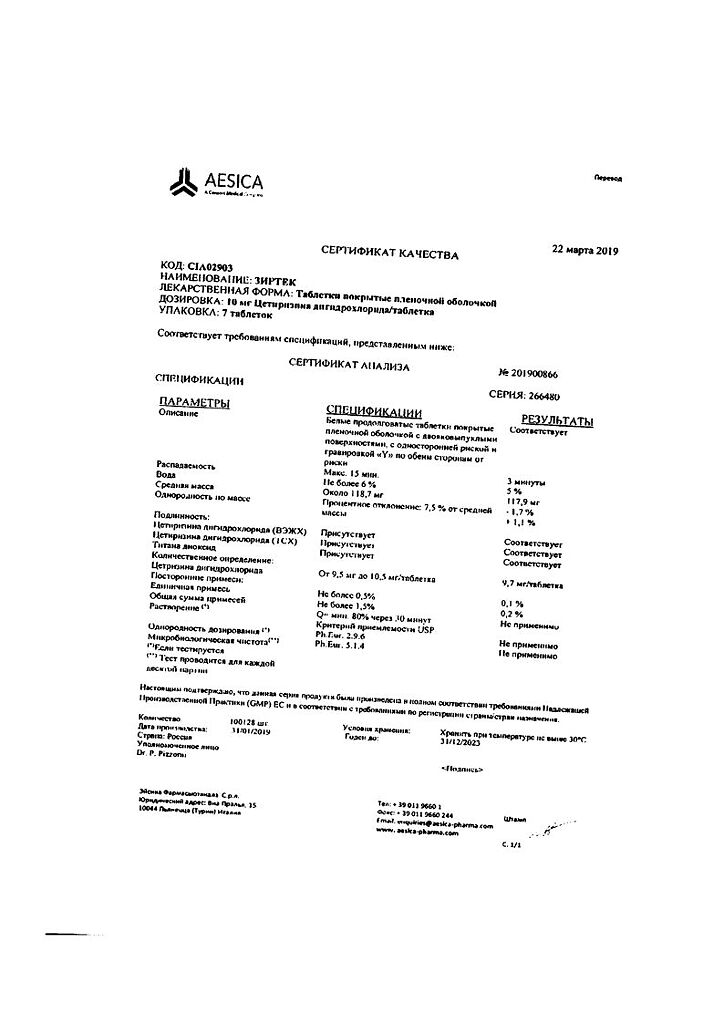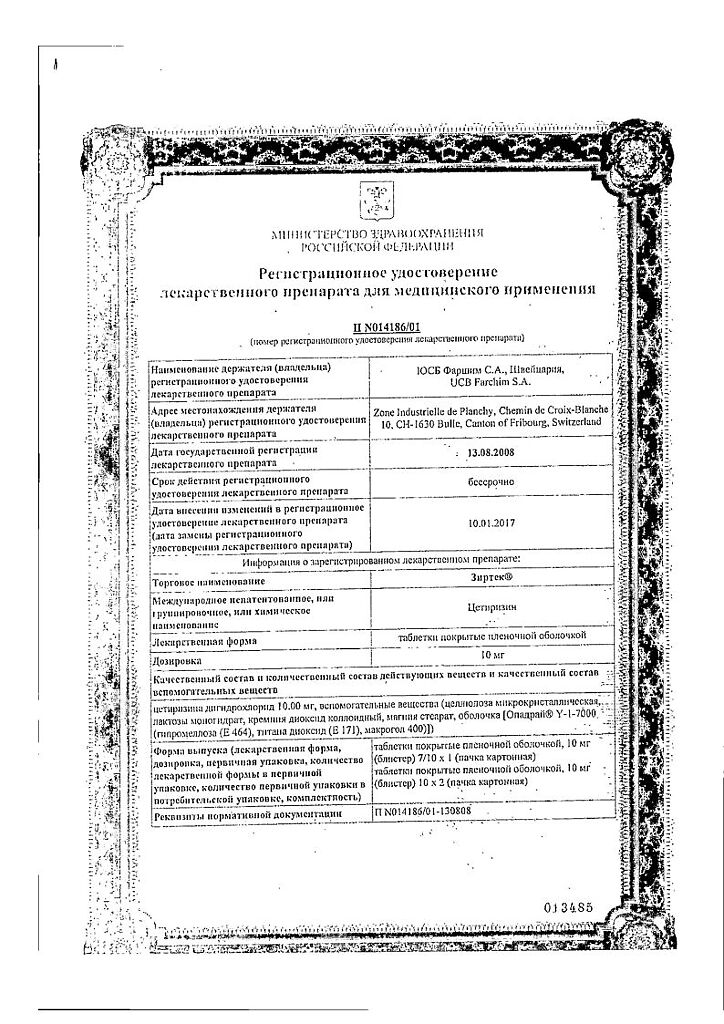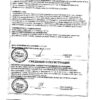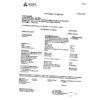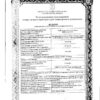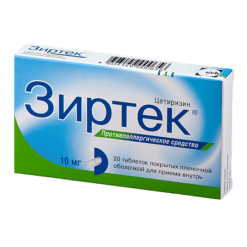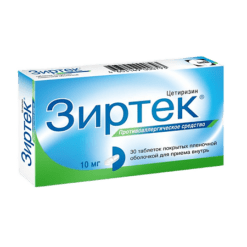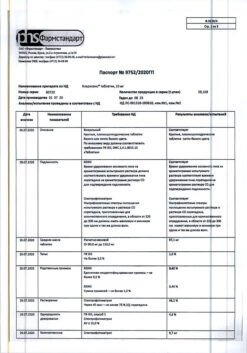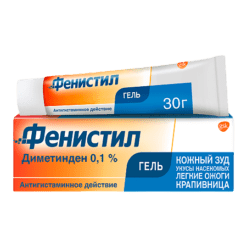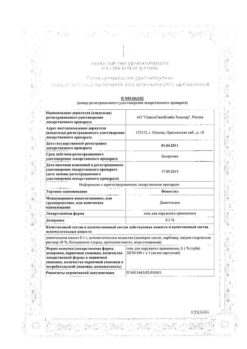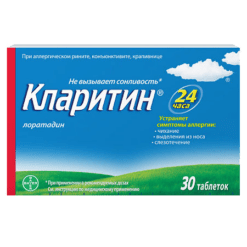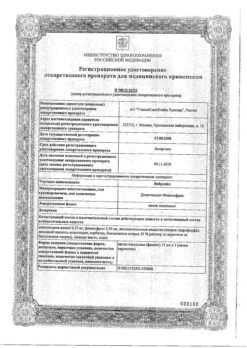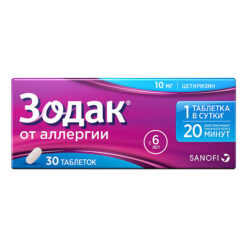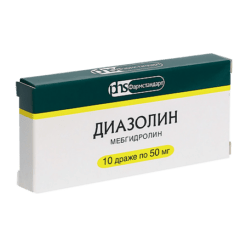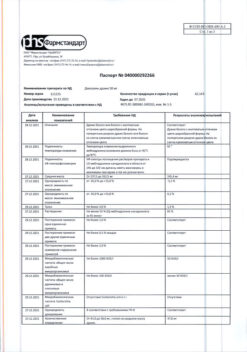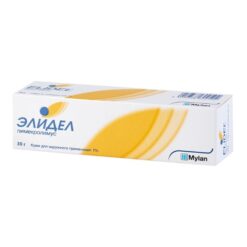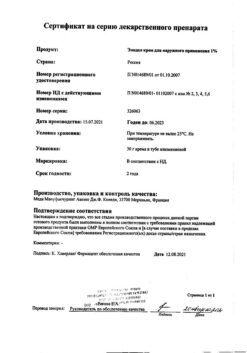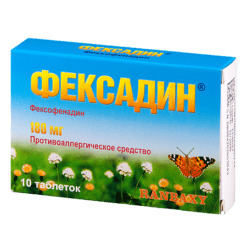No products in the cart.
Description
Zyrtec is an antihistamine, anti-allergic.
Pharmacodynamics
Cetirizine is the active ingredient of the drug Zyrtec® – is a metabolite of hydroxyzine, belongs to the group of competitive histamine antagonists and blocks H1-histamine receptors.
Cetirizine prevents the development and facilitates the course of allergic reactions and has antipruritic and antiexudative actions. Cetirizine affects the early histamine-dependent stage of allergic reactions, limits the release of inflammatory mediators at the later stage of the allergic reaction, and also reduces migration of eosinophils, neutrophils and basophils and stabilizes mast cell membranes. It reduces capillary permeability, prevents the development of tissue edema, relieves smooth muscle spasm. Eliminates the skin reaction to the introduction of histamine, specific allergens, as well as cooling (in cold urticaria). Reduces histamine-induced bronchoconstriction in mild bronchial asthma.
Cetirizine has no anticholinergic and antiserotonin effects. In therapeutic doses the drug practically does not cause a sedative effect. After a single dose of 10 mg of cetirizine it causes the action in 20 minutes (in 50% of patients), in 60 minutes (in 95% of patients) and lasts more than 24 hours. During a course of treatment, tolerance to the antihistamine effect of cetirizine does not develop. After discontinuation of therapy the effect lasts up to 3 days.
Pharmacokinetics
The pharmacokinetic parameters of cetirizine change linearly.
Intake. After oral administration, the drug is quickly and completely absorbed from the gastrointestinal tract. Food intake does not affect the completeness of absorption, although its speed decreases. In adults after a single therapeutic dose of the drug, Cmax in plasma is 300 ng/ml and is reached after (1±0.5) hours.
Distribution. Cetirizine is (93±0.3)% bound to plasma proteins. Vd is 0.5 l/kg. No cetirizine cumulation is observed when taking the drug in a dose of 10 mg for 10 days.
Metabolism. In small amounts, it is metabolized in the body by O-dealkylation (unlike other H1-histamine receptor antagonists, which are metabolized in the liver via the cytochrome system) to form a pharmacologically inactive metabolite.
Elimination. In adults, T1/2 is approximately 10 h; in children 6 to 12 years, 6 h; 2 to 6 years, 5 h; 6 months to 2 years, 3.1 h. About 2/3 of the taken dose of the drug is excreted unchanged by the kidneys.
In elderly patients and patients with chronic liver disease a single use of the preparation in dose of 10 mg will increase T1/2 by about 50%, and systemic clearance decreases by 40%.
In patients with mild renal impairment (Cl creatinine >40 ml/min), pharmacokinetic parameters are similar to those in patients with normal renal function.
In patients with moderate renal insufficiency and in patients on hemodialysis (creatinine Cl1/2 is increased by a factor of 3 and total clearance is decreased by 70% relative to these parameters in patients with normal renal function, which requires appropriate changes in dosing regimen.
Cetirizine is almost not eliminated from the body by hemodialysis.
Indications
Indications
Active ingredient
Active ingredient
Composition
Composition
Active substance:
Cetirizine dihydrochloride10 mg;
Auxiliary substances:
MCC – 37 mg;
Lactose monohydrate – 66.4 mg;
Colloidal silica – 0.6 mg;
Magnesium stearate – 1.25 mg;
coating film:
Opadry® Y-1-7000 (hypromellose (E464) – 2.156 mg, titanium dioxide (E171) – 1.078 mg, macrogol 400 – 0.216 mg) – 3.45 mg
How to take, the dosage
How to take, the dosage
Ingestion.
Children over 6 years and adults: the initial dose is 5 mg (1/2 tablet or 10 drops) once a day, if necessary it can be increased to 10 mg (1 tablet or 20 drops) once a day.
Sometimes a starting dose of 5 mg (1/2 tablet or 10 drops) may be sufficient to achieve therapeutic effect. The daily dose is 10 mg (1 tablet or 20 drops).
Interaction
Interaction
In the study of drug interactions of cetirizine with pseudoephedrine, cimetidine, ketoconazole, erythromycin, azithromycin, diazepam, glipizide and antipyrine no clinically significant adverse interactions were found.
Concomitant use with theophylline (400 mg/day) decreases total clearance of cetirizine by 16% (the kinetics of theophylline is not changed).
Concomitant use with ritonavir increased AUC of cetirizine by 40%, while that of ritonavir changed slightly (-11%).
When used concomitantly with macrolides (azithromycin, erythromycin) and ketoconazole, no changes in AUC were noted.
When using the drug in therapeutic doses no data on interaction with alcohol (at blood alcohol concentration of 0.5 g/l) were obtained. Nevertheless, it is necessary to refrain from drinking alcohol during the therapy with the drug in order to avoid CNS depression.
A 3-day “washout” period is recommended before allergy testing because H1-histamine receptor blockers inhibit cutaneous allergic reactions.
Special Instructions
Special Instructions
In patients with spinal cord injury, prostatic hyperplasia, and in the presence of other predisposing factors to urinary retention, caution is required because cetirizine may increase the risk of urinary retention.
It is recommended to refrain from drinking alcohol (see “Interactions”).
Impact on the ability to drive vehicles and operate machinery.
An objective assessment of driving and operating ability has not reliably revealed any adverse events when taking the drug in the recommended dose.
But nevertheless, while taking the drug, it is advisable to refrain from potentially hazardous activities requiring increased concentration and quick psychomotor reactions.
Contraindications
Contraindications
With caution: chronic renal insufficiency (at Cl creatinine >10 ml/min, dosing regimen should be adjusted); elderly age (decreased glomerular filtration may occur); epilepsy and patients with increased seizure readiness; patients with predisposing factors to urinary retention.
Side effects
Side effects
Immune system: rare – hypersensitivity reactions; very rare – anaphylactic shock.
Nervous system disorders: often – headache, increased fatigue, dizziness, somnolence; infrequent – paresthesias; rare – seizures; very rare – perversion of taste, dyskinesia, dystonia, syncope, tremor, tics; frequency unknown – memory disorders, including amnesia.
Psychiatric disorders: infrequent – agitation; rare – aggression, confusion, depression, hallucinations, sleep disorders; frequency unknown – suicidal ideation.
An organ of vision: very rare – accommodation disorder, blurred vision, nystagmus.
Hearing organ: frequency is unknown – vertigo.
The digestive system: often – dry mouth, nausea; infrequently – diarrhea, abdominal pain.
System disorders: rarely – tachycardia.
Respiratory system: often – rhinitis, pharyngitis.
Metabolism: rarely – weight gain.
The urinary system: very rare – dysuria, enuresis; frequency unknown – urinary retention.
Laboratory measures: rare – changes of liver function tests (increased liver transaminases activity, alkaline phosphatase, GGT and bilirubin concentration); very rare – thrombocytopenia.
Skin: infrequent – rash, itching, rarely – urticaria, very rare – angioedema, erythema persistent.
General disorders: infrequent – asthenia, malaise; rarely – peripheral edema; frequency unknown – increased appetite.
Overdose
Overdose
Symptoms (when taken once in a dose of 50 mg): confusion, diarrhea, dizziness, fatigue, headache, malaise, mydriasis, itching, weakness, restlessness, sedation, drowsiness, stupor, tachycardia, tremor, urinary retention.
Treatment: immediately after taking the drug – gastric lavage or induction of vomiting. Administration of activated charcoal, symptomatic and supportive therapy is recommended. There is no specific antidote. Hemodialysis is ineffective.
Similarities
Similarities
Additional information
| Shelf life | 5 years |
|---|---|
| Conditions of storage | In a dry place, at a temperature not exceeding 25 °C |
| Manufacturer | UCB Farma, Belgium |
| Medication form | pills |
| Brand | UCB Farma |
Other forms…
Related products
Buy Zyrtec, 10 mg 7 pcs with delivery to USA, UK, Europe and over 120 other countries.

